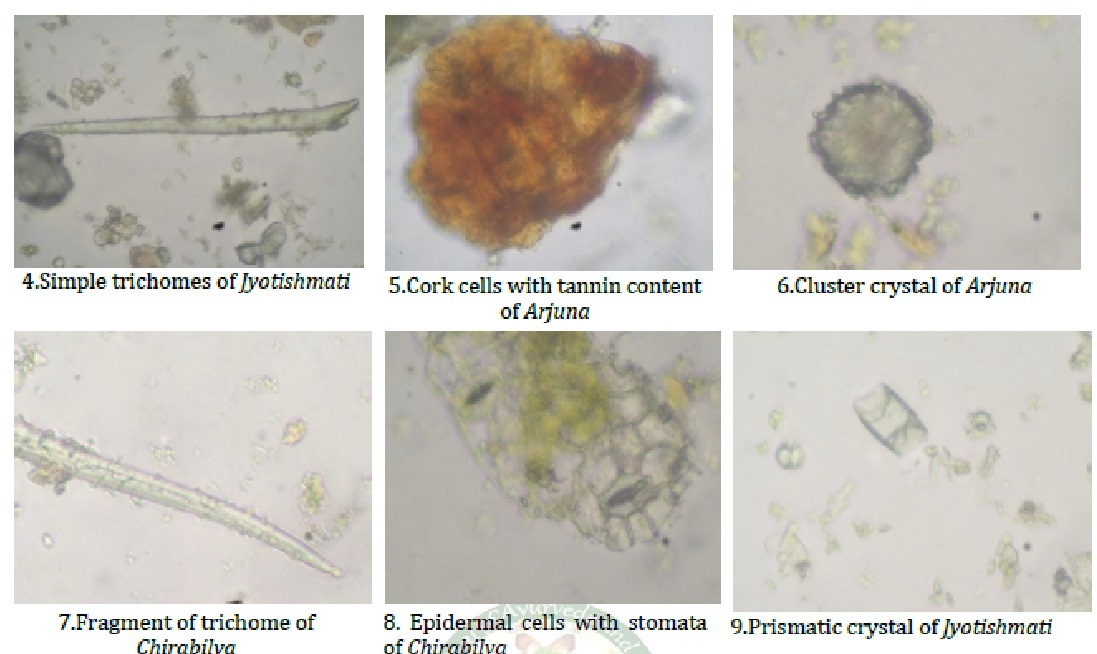Detailed Comparative Pharmacognostical and Physicochemical Evaluation of Chirabilvadiyoga w.s.r. to Bhavana (Trituration)
Abstract
Chirabilvadi Yoga is a combination of four drugs Chirabilva, Arjuna, Jyotishmati and Kakanasa in powder form, each of these ingredients has solid base of previous experimental studies for their individual analgesic activity. Bhavana (trituration) is an important Samskara (process) mentioned in Ayurvedic classics by which drug may be made very potent to produce a positive results. Till date no data available on this combination Bhavita Chirabilvadi Yoga triturated seven times with Chirabilva Patra Swarasa and made dried powder. Present study is to screen the differences in pharmacognostical and pharmaceutical profile of the Chirabilvadi Yoga before and after Bhavana. After Bhavana significant changes were found in the pharmacognostical parameters like deformated rosette crystals and cluster crystal of Arjuna and broken stone cells of Arjuna, which are rarely found before Bhavana of the drug and also evaluate the differences in the pharmaceutical profile before and after Bhavana like loss on drying, ash value, acid insoluble ash, water soluble extract, methanol soluble extract, pH and HPTLC.
Downloads

Copyright (c) 2022 International Journal of Ayurveda and Pharma Research

This work is licensed under a Creative Commons Attribution-NonCommercial-ShareAlike 4.0 International License.






